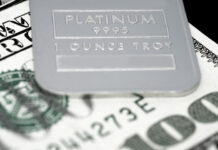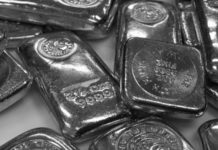
TWO years ago things were looking so good for the platinum sector that Impala Platinum (Implats) and Northam Platinum got into a corporate brawl over ownership of Royal Bafokeng Platinum (RBPlat) which Implats eventually won.
When you look at the current situation these companies find themselves in following a vicious collapse in the platinum group metals (PGM) market you have to ask the question: What were they (Northam CEO Paul Dunne and Implats CEO Nico Muller) thinking?
How did they get the market so wrong because, if they had even suspected what was coming down the track, they surely would not have gone after RBPlat?
Dunne agrees with that assessment but comments, effectively, that it’s complicated.
He claims Northam was aware of the risks involved and that is why the company dropped out when it did leaving Implats the winner but in the position of a single parent with limited financial means “holding the baby”.
“We did not have the suspicion that the market would deteriorate as it did but we moved to protect ourselves against the possibility of it happening.
“To some people’s frustration Northam did not cross the 35% ownership mark in its bid for RBPlat. That was deliberate. It meant we remained in the position of making a voluntary offer. If we crossed the 35% level then we would have had to make our offer mandatory.
“In a voluntary offer you are allowed to protect yourself with material adverse condition clauses. You cannot do this in a mandatory offer.
“So we were able to have a number of adverse condition statements inside the offer so that if the price falls we would pull away from the offer. That is exactly what happened. We had four provisions and all four were broken.”
Commenting on the PGM market at Northam’s interim results, in which share earnings fell just over 91%, Dunne said: “I would like to believe this is the bottom but we already have a very bloody picture.”
Dunne singles out three reasons for the dramatic negative change in market conditions from two years back. The first is the global macro situation which he says is “messy”.
He comments: “The world is not in a good place and the interest rate cycle is against hard commodities. You can now put money in a US government bond and get about a 5% return in US dollar terms on a low risk yield. Why would you keep metal in the vault?”
The second reason focuses on rhodium which Dunne says has suffered from major substitution in a key use in the manufacture of fibre glass.
“Historically the fibre glass industry has used an alloy which is composed of 80% platinum and 20% rhodium. The Chinese manufacturers moved over this period to an alloy mix which was 95% platinum and 5% rhodium. We now know this but we did not know it then – nobody knew it then – because the Chinese did this quietly for competitive reasons.
“On the face of it this seems small but when you do the numbers it is not small. We believe we have lost about 30,000 ounces of annual demand from the rhodium market which is only a 1.2 million oz market and which is finely balanced.
“The other change is the competitive position of Chinese vehicles and not just EVs (electric vehicles) but also ICE (internal combustion engine) vehicles. Chinese vehicles have taken market share away from the traditional Western car companies in China – the likes of Volkswagen, Mercedes Benz and others.
“Those western cars have lost significant market share against the Chinese equivalent vehicles and those Chinese vehicles are not as jacked up in terms of emission loadings and that has hurt the palladium market in particular.
“Palladium peaked at around $3,000/oz and has dropped to around $950/oz while rhodium has fallen from the high $20,000s/oz to around about $4,500/oz.”
Summing it all up Dunne comments: “These are very material changes. Put it all together and the basket (the overall price received for the mix of PGMs metals produced by the South African platinum companies) has almost halved.”
“If your revenue halves and your cost inflation is north of 10% which it was in the last couple of years you really have a hell of a squeeze on the margin.”









